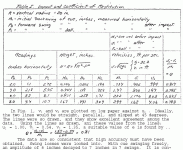How fast a particular person can move cues of different weights depends a lot on that person's arms and coordination. How fast a particular cue stick and tip will move a cue ball for a particular speed is much simpler to figure out. This can be looked at in two steps:
Assuming the tip is ideal and loses no energy in the tip-ball collision, we have:
Vball = Vstick * 2 * Mstick / (Mball + Mstick)
where V is for velocity (or speed) and M is for mass.
If you plug in 6 ounces for the ball and 18 ounces (to make things come out even) for the stick, you get:
Vball = 1.5 * Vstick
If you plug in 24 ounces for the stick, you get:
Vball = 1.6 * Vstick
So the question is whether you lose less than 1/15th of stick speed when you go from 18 ounces to 24 ounces. That depends on your arm and how you practice. If you just make up for the loss of speed with the increased weight of the stick (Vball is the same for 18 as for 24) then you will do better with a weight right between those two (21 ounces) but it won't be by much.
The second part of the deal is to include the "efficiency" of the cue tip. All tips lose energy during the collision. Break tips have less loss than typical playing tips.
Assuming the tip is ideal and loses no energy in the tip-ball collision, we have:
Vball = Vstick * 2 * Mstick / (Mball + Mstick)
where V is for velocity (or speed) and M is for mass.
If you plug in 6 ounces for the ball and 18 ounces (to make things come out even) for the stick, you get:
Vball = 1.5 * Vstick
If you plug in 24 ounces for the stick, you get:
Vball = 1.6 * Vstick
So the question is whether you lose less than 1/15th of stick speed when you go from 18 ounces to 24 ounces. That depends on your arm and how you practice. If you just make up for the loss of speed with the increased weight of the stick (Vball is the same for 18 as for 24) then you will do better with a weight right between those two (21 ounces) but it won't be by much.
The second part of the deal is to include the "efficiency" of the cue tip. All tips lose energy during the collision. Break tips have less loss than typical playing tips.
